![OWLv2 for Moore/Stanitski's Chemistry: The Molecular Science, 5th Edition, [Instant Access], 1 term (6 months)](https://s3.amazonaws.com/compass-isbn-assets/textbook_empty_images/large_textbook_empty.svg)
(a)
Interpretation:
The effect, which favors the forward reaction has to be given.
Concept Introduction:
Le Chatelier's principle:
It states that if a system in equilibrium gets disturbed due to modification of concentration, temperature, volume, and pressure, then it reset to counteract the effect of disturbance.
In the
If number of mole increases result the increasing entropy value and decreases result the decreasing entropy of reaction.
(b)
Interpretation:
The effect, which favors the forward reaction has to be given.
Concept Introduction:
Refer part (a)
(c)
Interpretation:
The effect, which favors the forward reaction, has to be given.
Concept Introduction:
Refer part (a)
Want to see the full answer?
Check out a sample textbook solution
Chapter 12 Solutions
OWLv2 for Moore/Stanitski's Chemistry: The Molecular Science, 5th Edition, [Instant Access], 1 term (6 months)
- 3-Methylaniline with NaNO2 in HCl at 0°C and subsequent reaction with water in an acidic medium.arrow_forwardThe reaction of cyclohexanone with diethylamine.arrow_forwardYou're preparing the 2-1 parenteral nutrition that uses potassium phosphate vials (3 mmol of phosphate and 4.4 meq of potassium per mL) to add the phosphate to the parenteral nutrtion. How many meq of potassium are added to the parenteral nutrition when the phosphate is added? Potassium 65 meq Phosphate 24 mmol Sterile water qs ad 2000mlarrow_forward
- The combined calcium and phosphorus in a parenteeral nutrition should not exceed 45 mEq/L. if the parenteral nutrition order shown containes 2mEq PO4/mmol, what is the combined calcium and phosphorus (mEq/L) in the parenteral nutrition order? Parenteral nutrition order: Potassium 65 mEq, Phosphate 24 mmol, Calcium 12 mEqarrow_forwardpls help on all asked.arrow_forward29. The following reaction takes place. A2B(s) = 2A (aq) + B(aq) + heat. If 2.50 moles of A2B is added into a 2.00 L container, it is found that 25.0% of the reactant dissociates to reach equilibrium. Find the solubility product constant, Ksp, for this reaction. Note: Your answer must include an ICE table.arrow_forward
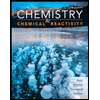 Chemistry & Chemical ReactivityChemistryISBN:9781337399074Author:John C. Kotz, Paul M. Treichel, John Townsend, David TreichelPublisher:Cengage Learning
Chemistry & Chemical ReactivityChemistryISBN:9781337399074Author:John C. Kotz, Paul M. Treichel, John Townsend, David TreichelPublisher:Cengage Learning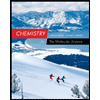 Chemistry: The Molecular ScienceChemistryISBN:9781285199047Author:John W. Moore, Conrad L. StanitskiPublisher:Cengage Learning
Chemistry: The Molecular ScienceChemistryISBN:9781285199047Author:John W. Moore, Conrad L. StanitskiPublisher:Cengage Learning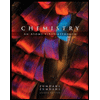 Chemistry: An Atoms First ApproachChemistryISBN:9781305079243Author:Steven S. Zumdahl, Susan A. ZumdahlPublisher:Cengage Learning
Chemistry: An Atoms First ApproachChemistryISBN:9781305079243Author:Steven S. Zumdahl, Susan A. ZumdahlPublisher:Cengage Learning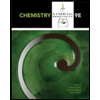 Chemistry & Chemical ReactivityChemistryISBN:9781133949640Author:John C. Kotz, Paul M. Treichel, John Townsend, David TreichelPublisher:Cengage Learning
Chemistry & Chemical ReactivityChemistryISBN:9781133949640Author:John C. Kotz, Paul M. Treichel, John Townsend, David TreichelPublisher:Cengage Learning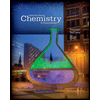 Introductory Chemistry: A FoundationChemistryISBN:9781285199030Author:Steven S. Zumdahl, Donald J. DeCostePublisher:Cengage Learning
Introductory Chemistry: A FoundationChemistryISBN:9781285199030Author:Steven S. Zumdahl, Donald J. DeCostePublisher:Cengage Learning Chemistry: Principles and ReactionsChemistryISBN:9781305079373Author:William L. Masterton, Cecile N. HurleyPublisher:Cengage Learning
Chemistry: Principles and ReactionsChemistryISBN:9781305079373Author:William L. Masterton, Cecile N. HurleyPublisher:Cengage Learning





